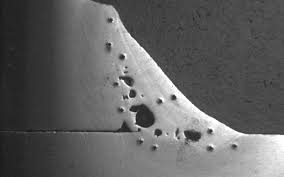What is Porosity in Welding: Essential Tips for Getting Flawless Welds
What is Porosity in Welding: Essential Tips for Getting Flawless Welds
Blog Article
Recognizing Porosity in Welding: Checking Out Causes, Effects, and Prevention Strategies
Porosity in welding is a relentless challenge that can substantially affect the top quality and honesty of welds. As specialists in the welding market are cognizant, recognizing the reasons, results, and prevention strategies connected to porosity is essential for achieving robust and dependable welds. By delving right into the source of porosity, examining its detrimental effects on weld top quality, and checking out efficient avoidance strategies, welders can enhance their expertise and skills to produce top quality welds continually. The detailed interaction of variables adding to porosity calls for a comprehensive understanding and a positive method to make sure successful welding results.
Common Reasons For Porosity
Porosity in welding is largely caused by a combination of aspects such as contamination, inappropriate protecting, and inadequate gas insurance coverage during the welding procedure. Contamination, in the kind of dust, grease, or corrosion on the welding surface area, develops gas pockets when warmed, leading to porosity in the weld. Incorrect protecting occurs when the shielding gas, generally used in processes like MIG and TIG welding, is incapable to fully shield the molten weld pool from responding with the bordering air, resulting in gas entrapment and succeeding porosity. Additionally, insufficient gas protection, frequently due to incorrect flow rates or nozzle positioning, can leave parts of the weld vulnerable, allowing porosity to create. These factors collectively add to the development of spaces within the weld, damaging its integrity and possibly creating architectural concerns. Recognizing and dealing with these usual causes are critical action in avoiding porosity and making certain the quality and strength of welded joints.
Impacts on Weld Quality
The existence of porosity in a weld can considerably compromise the overall high quality and stability of the bonded joint. Porosity within a weld produces spaces or tooth cavities that compromise the structure, making it a lot more vulnerable to breaking, rust, and mechanical failure.
Furthermore, porosity can hinder the effectiveness of non-destructive screening (NDT) techniques, making it challenging to find various other problems or interruptions within the weld. This can result in considerable safety and security concerns, particularly in critical applications where the architectural integrity of the bonded elements is extremely important.

Prevention Techniques Review
Provided the detrimental influence of porosity on weld high quality, reliable prevention techniques are vital to keeping the architectural stability of welded joints. One of the key prevention methods is complete cleansing of the base materials prior to welding. Impurities such as oil, grease, corrosion, and moisture can contribute to porosity, so ensuring a tidy job surface is necessary. Proper storage of welding consumables in dry problems is also important to stop dampness absorption, which can lead to gas entrapment during welding. Additionally, selecting the suitable welding specifications, such as voltage, existing, and take a trip rate, can assist minimize the risk of porosity development. Making certain adequate shielding gas flow and insurance coverage is one more important avoidance strategy, as inadequate gas insurance coverage can result in atmospheric contamination and porosity. Appropriate welder training and accreditation are vital for applying precautionary actions effectively and consistently. By including these prevention methods right into welding practices, the occurrence of porosity can be significantly lowered, resulting in more powerful and a lot more dependable bonded joints.
Significance of Proper Protecting
Correct shielding in welding plays a critical function in preventing atmospheric contamination and making certain the honesty of welded joints. Securing gases, such as argon, helium, or a combination of both, are generally used to protect the you can look here weld pool from reacting with aspects in the air like oxygen and nitrogen. When these responsive aspects enter call with the hot weld swimming pool, they can trigger porosity, leading to weak welds with lowered mechanical properties.

Inadequate protecting can result in various flaws like porosity, spatter, and oxidation, jeopardizing the architectural integrity of the welded joint. As a result, sticking to correct protecting practices is necessary to produce top notch welds with minimal problems and make sure the durability and dependability of the welded parts (What is Porosity).
Surveillance and Control Approaches
Just how can welders efficiently check and regulate the welding process to make sure optimum results and prevent defects like porosity? One trick method is via the usage of innovative monitoring innovations. These can include real-time tracking systems that give feedback on parameters such as voltage, existing, travel rate, and gas circulation prices. By constantly keeping track of these variables, welders can determine variances from the ideal problems and make immediate changes to avoid porosity development.

In addition, implementing proper training programs for welders is crucial for monitoring and managing the welding procedure successfully. What is Porosity. Educating welders on the value of preserving constant criteria, such as proper gas securing and travel speed, can assist avoid porosity concerns. Routine assessments and certifications can additionally make certain that welders excel in monitoring and controlling welding processes
In addition, the usage of automated welding systems can boost surveillance and control abilities. These systems can specifically control welding parameters, lowering the possibility of human mistake and guaranteeing regular weld top quality. By combining sophisticated surveillance technologies, training programs, and automated systems, welders can successfully monitor and regulate the welding process to minimize porosity flaws and accomplish top notch welds.
Final Thought

Report this page